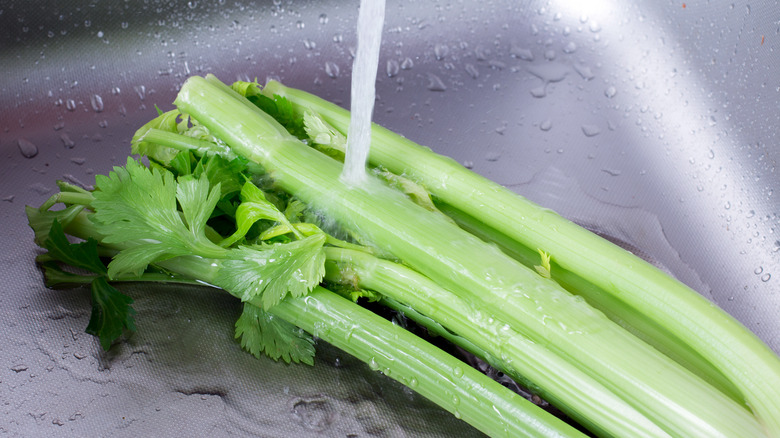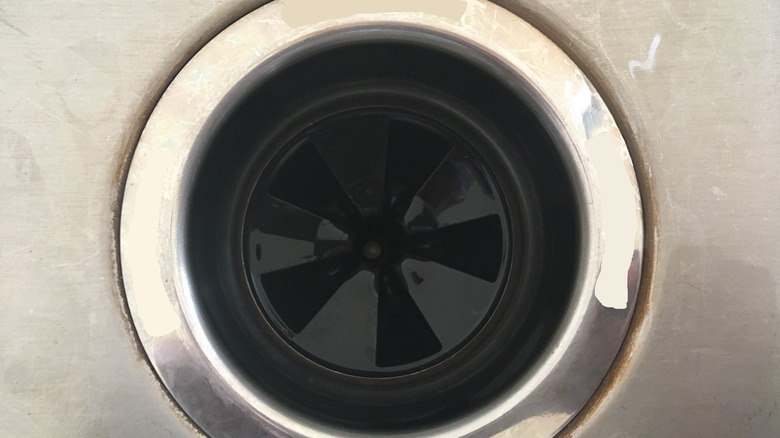You Should Never Put Celery Down The Garbage Disposal. Here's Why
There are a lot of benefits to having a garbage disposal in your kitchen sink. It saves time — you don't have to spend precious minutes wiping every leftover morsel off your plate before rinsing it — reduces the amount of trash, and can even save you money and energy in the long run. It's one of the most convenient gadgets when it comes to doing the dishes: All you have to do is flick a switch and all the gunk piling up at the bottom of the sink is cleared out in seconds.
However, anyone who has a garbage disposal also knows that it can easily get clogged or broken and that there's a long list of things you should never put down the drain to prevent said issues. One of those things that doesn't belong in your garbage disposal? Celery. Here's why the green stalks should go in the trash or the compost (or really anywhere else, for that matter) instead.
Celery can ruin your garbage disposal blades
Whether you use it for juice, for a salad topping, or for ants on a log (the OG after-school snack), celery is an easy veggie to work with. But no matter what you're using it for, you're always left with the ends of the stalks that you don't eat (both the "butt" and the leafy tops). It may be tempting to toss said pieces down the drain, but experts warn against it. According to Len the Plumber, the strings of the celery stalk can wrap around the blades and ultimately break the disposal. Five Star Plumbing adds that if too much celery goes down the disposal, you may completely have to replace it.
Celery isn't the only veggie that doesn't belong in the garbage disposal. Lifehacker cautions that any similarly fibrous foods can have the same damaging effect on your drain. That includes things like pineapple, asparagus, artichokes, onion and apple skins, and corn husks.

